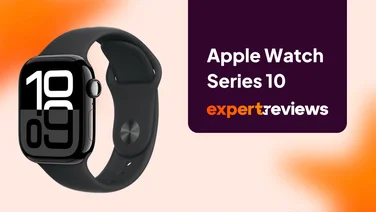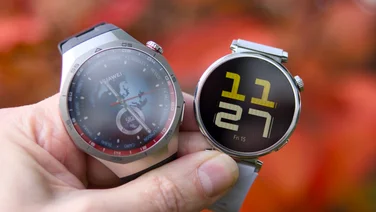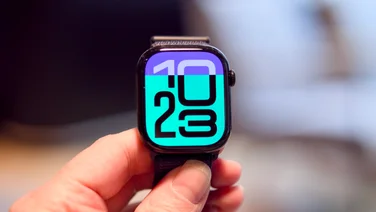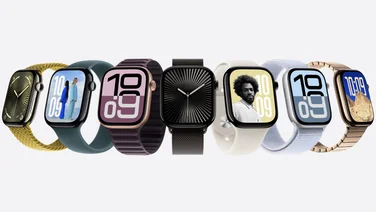To help us provide you with free impartial advice, we may earn a commission if you buy through links on our site. Learn more








- Amazing battery life
- Comfortable and stylish
- Has GPS and heart rate monitor
- Limited third-party service support
- Sleep tracking is patchy
Huawei has made some great smartwatches, with the Huawei Watch and Huawei Watch 2 ranking among our favourite Android wearables. With the new Huawei Watch GT, however, the company has followed Samsung’s lead and ditched Wear OS, in favour of its own LiteOS operating system.
The reason is simple. Thanks to its bespoke OS and innovative dual-chipset design, the Huawei Watch GT promises to shake up the world of wearables with a revolutionary 30-day battery life.
Huawei Watch GT review: What you need to know
Like many recent wearables, the Huawei Watch GT is a smartwatch with a heavy lean towards sports tracking, in both the way it looks and the way it works. With its 1.4in circular colour OLED display, it keeps tabs on your heart rate, daily steps and sleep, and includes its own GPS receiver.
It’s waterproof (so it can track swimming as well as other sports), and it’ll keep you up to date with notifications from your smartphone as well.
There’s no 4G option, however, as there is with the Samsung Galaxy Watch 4G or the cellular version of the Apple Watch. The Huawei Watch GT works like a traditional smartwatch, connecting to your phone over Bluetooth and synchronising only with Huawei’s own Health app.
Huawei Watch GT review: Price and competition
The Watch GT is available online for £180 – which is impressively low, given its integrated GPS and heart-rate tracking. At this sort of price, our top alternative would be the Garmin Vivoactive 3, which costs £199. Another great choice is the Fitbit Ionic, though it’s pricier at around £240.
For Wear OS fans, the Huawei Watch 2 remains our favourite smartwatch, at £226, while the Samsung Gear Fit2 Pro is £150, which is also great value for money.
Huawei Watch GT review: It’s all about the battery life
There’s one thing that sets the Huawei Watch GT apart from every other smartwatch on the market, and that’s battery life. You didn’t read it wrong at the top of the review: Huawei really is claiming up to 30 days’ use from the GT. That’s a maximum, of course, but even average usage – including three hours’ GPS-backed exercise and continuous heart-rate monitoring – is claimed at an impressive two weeks. With the latest Apple Watch needing to revisit its charging cradle once every two days, Huawei’s claims sound like witchcraft.
Yet they’re very much a practical reality. When I first donned the fully charged Huawei Watch GT, I used mostly it to track my steps and heart rate. I threw in a couple of hours of GPS use, just for good measure, but I didn’t turn notifications on and synchronised it with my phone only occasionally. Two weeks later, the battery gauge was still showing 30%.
Nor is this a case where the charge suddenly plummets once you start actually interacting with the watch. With the battery at 30%, I hooked up the watch to my phone and ran it like a normal smartwatch, expecting it to die by the end of the day – as certainly would have happened with an Apple Watch. Yet more than three days later it was still going strong.








Again, I didn’t hammer the GPS, tracking only a single one-hour commute on my bike, but that’s still astonishing stamina. At that rate, the Watch GT was on course to deliver around 12 days of normal use on a charge, not far short of the two weeks Huawei claims. In light use I really can see it stretching to three weeks, if not the full 30 days.
Remember, too, that the Huawei Watch GT has a full-colour OLED display. The closest any other OLED watch comes to this sort of battery life is the Fitbit Ionic, and that lasts around five days per charge tops.








You’re probably wondering how on earth Huawei has achieved this. The TicWatch Pro switches between an OLED screen and a basic LCD one when battery is tight, but with the Watch GT it’s all about the silicon inside. In place of the traditional Qualcomm CPU, Huawei’s own ultra-low-power chip runs things 99% of the time, with a second more powerful chipset engaging only when the watch senses that you’re moving about.
Thus, when you’re sitting, sleeping, or binge-watching the latest series of Better Call Saul, the GT barely uses any power at all. It only really eats into its reserves when you’re exercising and demand more granular heart rate measurements and GPS readings.
Huawei Watch GT review: Features and design
Impressive as the battery life is, it’s also important to ask what the Huawei Watch GT is like to use. On that front, it starts off well with a stylish, practical design that’s very easy to live with.
As you can see, it’s closer to the rugged style of the Huawei Watch 2 than the suit-ready stylings of the Huawei Watch 1, but it’s not over-the-top sporty. It comes in black or silver, with four different strap options available at purchase. I found the stretchy grey and black strap extremely comfortable both in normal use and during exercise, but standard 22mm pin fittings allow you to attach whatever wristband takes your fancy.
The Watch GT is thinner than your average sports wearable, measuring 10.6mm from the front of the screen to the rear of the casing, and feels nicely built. The two buttons on the right edge of the watch have a firm click to them, and the smoky black ceramic bezel looks superb. The ambient light sensor is hidden behind it, keeping the full face of the 454 x 454, 1.4in OLED screen on view.








Despite the simple looks, there’s very little in the way of sensors that this watch doesn’t have. There’s GPS, with GLONASS and BEIDU supported in addition to regular GPS, plus an optical heart rate sensor, accelerometer and gyroscope to track motion, a magnetometer (compass) and barometer.
All that’s really missing is Wi-Fi, 4G cellular connectivity and wireless charging (the watch uses two contacts on the rear to charge via a magnetic USB puck). There’s also no NFC, so contactless payments are out of the question. Overall though the Huawei Watch GT is impressively well equipped for the money.
Huawei Watch GT review: Ease of use and activity tracking
Browsing around the Watch GT interface feels great. The touchscreen is responsive and, barring the odd jerky screen transition, everything feels snappy. It’s easy to find your way around too: swipe left and right to reach the various widget screens (activity rings, weather and heart rate), swipe down from the top for settings and up from the bottom for notifications. Press the upper side button and a list of on-watch apps appears – timer, compass, barometer and so on.
The lower button fires up your list of activity tracking modes. The watch can auto-detect activity, but this consumes extra power, so it’s switched off by default. There’s plenty of activities to choose from, including swimming with stroke detection and distance tracking for both indoor and outdoor pools. Indoor and outdoor cycling, running, hiking and climbing are all covered as well.








For runners just starting out, there’s even a choice of training programmes, which coach you towards various goals. And if you’re serious about your training, it’s possible to tweak the watch’s heart rate zones via the Huawei Health app so you can use the GT as a proper on-the-go training aid. Finally, there’s sleep tracking too – something that’s still missing from the otherwise superb Apple Watch’s core toolset, mainly because you have to spend every other night charging it.
So, how well does all this tracking technology actually work? To find out, I rode my regular commute to work a few times while wearing a MyZone Bluetooth chest belt connected to Strava on my Huawei Mate 20 Pro.
I found the Watch GT did a pretty good job of tracking distance covered, though not completely perfect: over a 11.1-mile distance its record was consistently short by an average of 0.2 miles (around 2%). Still, that’s not a huge error margin, and examining the track data showed that the Watch GT had no problems tracking my position accurately, whether I was riding through the open tracts of the suburbs or weaving between tall buildings in town. At no point did the GPS trace erroneously show me cutting a corner on the map or veering through a brick wall.








Heart-rate tracking is a little more fiddly, since the Huawei Health app doesn’t provide any convenient way of reviewing the data other than through its own charts. You can synchronise your data to Google Fit, MyFitnessPal or (oddly) the Jawbone app, but there’s no other way to access it. I really would like to be able to export the raw data for analysis elsewhere – or at least review my stats in a browser. Still, the heart rate figures it recorded were pretty much spot on. As you’d expect from a wrist-borne optical heart-rate monitor, there was some deviation from the more accurate chest belt, but it was never out by more than 4%. That’s pretty good going.
Sleep tracking was sadly less accurate. Like most trackers, the Watch GT monitors movement and heart-rate data to assess the quality of your sleep, providing data on how long you were in deep sleep, light sleep and REM sleep states. It also, somehow, generates “breathing quality stats”. Huawei says it’s worked with the Harvard Medical School CDB centre to improve accuracy.
Unfortunately, the watch isn’t correctly picking up the time I go to bed. Over the past week it’s recorded three times that I’ve turned in before nine at night, which I never do (unless I’m jet-lagged). And since there’s no way of editing the start and end times, you’re stuck with faulty data, which isn’t very useful.








Since the software is pretty new, things might be improved in forthcoming updates. I hope so, because overall I like the way the Huawei Health app is laid out. It’s simple to understand, yet puts plenty of advanced features and settings within easy reach. You can browse all types of data day, week, month and year, with charts available for heart rate (with zone breakdowns), speed and elevation, all laid out in a clear and easy-to-understand manner.
Finally, I have to say that phone notifications could be handled better too. The watch vibrates whenever you receive a message or notification from an app, and it lets you tap and read further, but there’s no way to reply to a message – not by tapping a canned reply, nor typing on the screen or using your voice. Even more aggravating, notifications disappear once you’ve tapped on them, forcing you to check your phone anyway.
Huawei Watch GT review: Verdict
Overall the Huawei Watch GT is an impressive wearable. It looks the part, it’s comfortable to wear, the screen looks great, activity tracking works well – and battery life is stunning.
Its main limitation is app support. It doesn’t connect to a wide range of online services, and you don’t get anything like the breadth of features you do from an Apple Watch or a Google Wear OS smartwatch. It’s not even as well equipped as Samsung or Garmin’s proprietary platforms.
Still, that’s understandable this early on in the lifespan of a new OS – and the Huawei Watch GT gets an awful lot right straight off the bat. Hopefully, niggles like wayward sleep tracking and limited notification support will be dealt with as time goes on, but already this is an impressive smartwatch that’s well worth a look.






